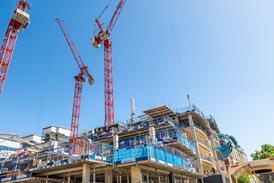- News

All the latest updates on building safety reformRegulations latest
- Focus
Close menu
- Home
- News
- Focus
- Comment
- Events
- CPD
- Building the Future
- Jobs
- Data
- Subscribe
- Building Boardroom
Water features: Making a splash
By Ike Ijeh2016-04-20T06:00:00

Technological advances mean we can now enjoy the spectacle of water without any of the misgivings about waste
This content is available to REGISTERED users
You are not currently logged in.
LOGIN or REGISTER to access this story

LOGIN or REGISTER for free access on selected stories and sign up for email alerts.
Take out a print and online or online only subscription and you will get immediate access to:
- Breaking industry news as it happens
- Expert analysis and comment from industry leaders
- Unlimited access to all stories, including premium content
- Full access to all our online archive
Get access to premium content subscribe today


















